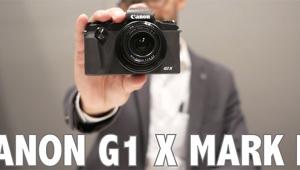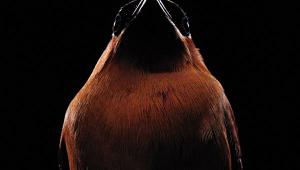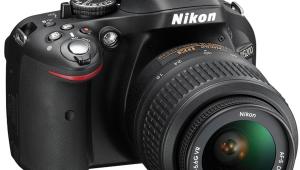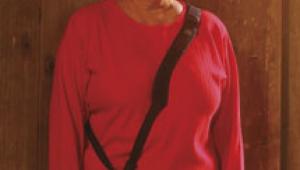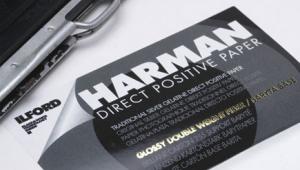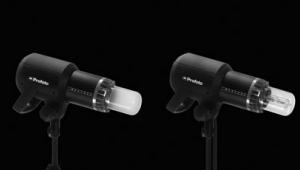Special Report: photokina
Trends On Diversity, Power, And Pride Of Workmanship Page 2
If you do use battery cameras, the latest ZTS Mini-MBT battery tester (www.ztsinc.com) is well worth considering because it allows you to test 1.2v Ni-MH and NiCd batteries (AAA to D), 1.5v alkaline (AAA to D and N), 3v photo lithium (CR 123, CR2, CRV3), and 9v alkaline and zinc-carbon. For $30 or so it allows pro-type pulse load testing, which is vastly more reliable than a simple voltage reading.
Diversity
I've always been slightly suspicious of the view that every challenge
or setback is an opportunity: how welcome, for example, is the opportunity to
improve your hopping when you lose a leg? And there are a lot of times you don't
want an opportunity: I'd rather stick with things I know and like, such
as Ilford Multigrade Warmtone, than take advantage of the opportunity to try
every other paper on the market to see if there is anything as good. There may
well be, but I don't want to take the time to find out. I'd rather
just take pictures.
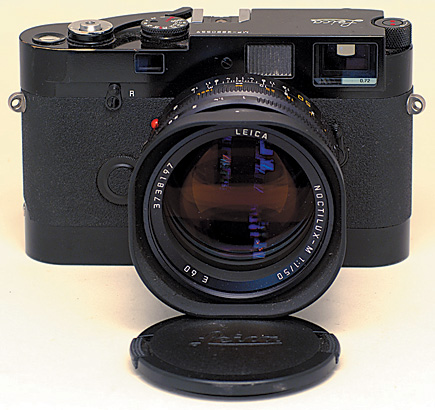 |
|
|
On the other hand, I certainly can't join the doomsayers who maintain
that traditional photography is crashing down in ruins all around us. It's
true, for example, that Bronica (www.tamron.com)
has gotten out of the medium format camera market, but at the show I saw new
6x12cm or 6x17cm cameras from Shen-Hao, Walker/Canham (www.bromwell
marketing.com), and Fotoman; Alpa told me that this was their best year
ever; Linhof (www.hpmarketingcorp.com)
showed a range of new lenses for their 6x12cm Technorama 612PC (58, 80, 120,
150, and 180mm); and Camera Bellows/Lee Filters (www.leefiltersusa.com) had
a prototype build-it-yourself wooden view camera. All right, these are cameras
that are made in tiny numbers, but does this matter? I only buy one at a time,
and as long as I can afford it and the manufacturers can stay in business, I
don't care if they make 50 cameras a year or 50,000.
Perhaps the finest examples of diversity come from Leica (www.leica-camera.com)
the a la carte program, which allows you to order a unique custom Leica for
only a few hundred dollars more than the base model--and Zeiss (www.zeiss.com),
whose new Zeiss Ikon rangefinder system is magnificent. Who would have thought,
15 years ago, that it would be possible today to choose between four high-end
rangefinder camera systems, Leica, Zeiss, Voigtländer, and Rollei?
There is a downside. High-end equipment will become proportionately more expensive.
Low-end digital cameras are a branch of consumer electronics, with tiny dealer
margins and all the profit made on volume: good news if you want to take snapshots,
not so good if you are serious about your photography or want to be published.
Mid-range equipment such as the excellent Nikon D70 will probably continue to
fall in price for a while, and we may even see
20- and 30-megapixel cameras becoming affordable, but when you are talking about
multi-thousand-dollar cameras, you need to be a very high-earning professional
if you want to replace your cameras every couple of years in order to take advantage
of the latest improvements. Most pros don't earn that kind of money: in
real inflation-adjusted terms, many are earning less than they did when I started
working in advertising photography in the 1970s.
What we may see, therefore, is a return to quality, combined with a bigger split
between pro and amateur. Throughout most of the history of photography, pro-quality
cameras have been very expensive indeed: there was only a brief period at the
end of the 20th century, two or three decades at most, when most serious amateurs
could afford to use the same cameras as the pros.
The big difference, of course, is that if you bought a Gandolfi or a Sanderson
in 1895 or a Leica M or Hasselblad 500C in 1955 you could realistically expect
to use that camera for several decades, quite possibly for the rest of your
life. Today, if you have a lot of money to spend, you have a choice between
a high-end film camera that will last for decades--don't worry about
film ceasing production--or a high-end digital camera that you will probably
need to upgrade after a very few years. Or, of course, you can buy a camera
that won't deliver pro quality and probably won't last long but
won't cost much either. Eventually you replace it the same way you do
a television set or freezer: when you need to, as something of a nuisance and
an unexpected expense, without any great excitement.
Or maybe there's one other option. Polaroid (www.polaroid.com)
were showing both a Polaroid-modified Holga and a cardboard-bodied pinhole Polaroid
camera, so maybe we'll see more of camera-as-toy. And why not? If you
take pictures for fun, why not use toys?
- Log in or register to post comments




